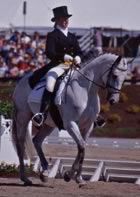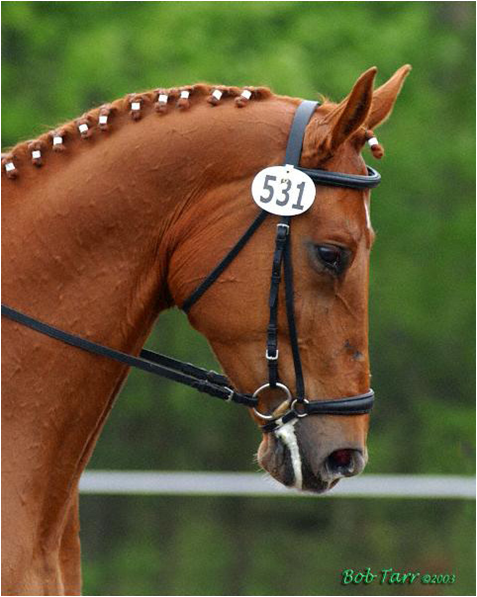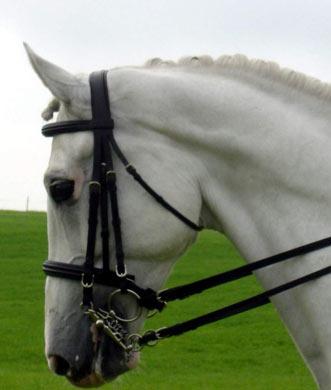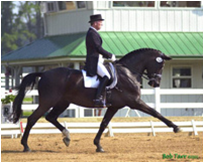
Dressage is an ancient equestrian discipline that highlights movements originally used in warhorses. The first horsemanship book, On Horsemanship, was written by the Greek cavalry general Xenophon and contains many of the same concepts seen in modern-day dressage.
The Levels (Classes)
Dressage classes are broken into levels, with each level having three tests. The tests are progressively more demanding both through the levels and within the level. The levels are:

- Training
- Introductory
- 1st Level
- 2nd Level
- 3rd Level
- 4th Level
- FEI (Fédération Equestre Internationale) Prix St. Georges
- FEI Intermediate
- FEI Grand Prix
- Freestyles at each level starting at 1st level
Requirements
Tack and Equipment
Dressage has its own special tack and equipment specifications, including:
- Snaffle bit, used up to the 4th level
- Double bridle, not used until the 3rd level


Attire
Dressage also has its own requirements for attire. The dress code for Introductory through 4th levels can consist of a short riding coat of a conservative color, with tie, choker or stock tie, white or light-colored breeches or jodhpurs, boots or jodhpur boots typically of a lighter color, a hunt cap or riding hat with a hard shell, derby or top hat (see Training level picture).
For any level above the 4th level, the attire is a dark coat with tails and a top hat, or a dark jacket with a hunt cap, and white or light-colored breeches, stock tie or tie, gloves, and black riding boots.
Additional guidelines for tack and attire can be found in the U.S. Equestrian Federation handbook.
Arena
Dressage tests may be ridden in a standard arena (20m x 60m) or a small arena (20m x 40m). In general, only Introductory and Training level tests are ridden in the small arena; all other tests are ridden in the standard arena.

Scoring
- Scores are based on individual movements.
- Each movement is assigned a score of 0 to 10.
- Click on this sample of Introductory Test B for scores and judge’s comments for each movement.
- Scores are described as such:
- 0: Did not attempt the movement
- 1: Very Bad
- 2: Bad
- 3: Fairly Bad
- 4: Insufficient
- 5: Sufficient
- 6: Satisfactory
- 7: Fairly Good
- 8: Good
- 9: Very Good
- 10: Excellent
Collective Marks
At the bottom of the test is a place for the judge to include collective scores in certain categories. These scores also range from 0 to 10 and are an assessment of the overall performance throughout the test. These categories are:
- Gaits: based on the freedom and regularity of the gaits.
- Impulsion: desire to move forward with suppleness of the back and a steady tempo.
- Submission: acceptance of steady contact, attention, and confidence.
- Rider’s position: the balance of the rider with the horse.
- Rider’s effectiveness of aids: correct bend and preparation of transitions.
- Harmony: between rider and horse.
- Geometry and accuracy: correct size and shape of circles and turns.
Error Scoring and Coefficients
- An error score is a -2 from the total score given for making an “error of test,” such as missing a movement or a major disobedience.
- A coefficient is the “2” that you see next to some of the movements. The movement or collective score for those items is multiplied by the coefficient for the total score for that item. The judge just needs to mark his or her 0 to 10 score, and the scorer or scribe will take care of the calculation.

Using a Scribe
A scribe is used when judging dressage so that judges never need to take their eyes off the performance.
Duties of the scribe may include:
- Listening and writing down the score as the judges say it.
- Writing down the judges’ comments for each movement, if asked to do so.
- It is customary for the scribes to write in the collective marks and for the judges to put the general comments at the bottom of the test.
Resources
- AQHA Handbook
- An Introduction to Dressage Video
- Dressage Video
- Dressage 101 Video
- About Dressage Tests Video
- Scoring in Dressage Test Video
- Freestyle Video
- Dressage Attire Video
- Beginner & Intermediate Dressage Bits and Bridles
- Advance Dressage Bits and Bridles
- United States Equestrian Federation Patterns
- United States Dressage Federation
- United States Equestrian Federation


